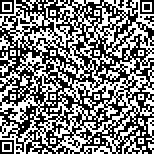张玉青.替罗非班降低急性心肌梗死患者经皮冠状动脉介入术后PTX3及CD11b表达[J].内科急危重症杂志,2021,27(6):472-476
扫码阅读全文

|
| DOI:10.11768/nkjwzzzz20210607 |
| 中文关键词: 替罗非班 急性心肌梗死 五聚素3 中性粒细胞表面粘附分子 |
| 英文关键词: |
| 基金项目: |
|
| 摘要点击次数: 4651 |
| 全文下载次数: 7039 |
| 中文摘要: |
| 摘要 目的:探讨替罗非班对急性心肌梗死(AMI)患者经皮冠状动脉介入术(PCI)后血清五聚素3(PTX3)及中性粒细胞表面粘附分子(CD11b)表达的影响。方法:选取2015年8月 2019年3月济南市槐荫人民医院收治的156例AMI患者,随机将其分成观察组和对照组,各78例。对照组患者行PCI术,观察组患者在对照组的基础上静脉注射替罗非班,应用生理盐水稀释终浓度为50g/mL ,前0.5h以0.4g/(kg•min)的速率静脉滴注,后以0.1g/(kg•min)的速率持续静脉滴注至术后36h。对比2组患者心肌再灌注情况、血PTX3、CD11b水平及主要不良心脏事件(MACE)等指标。结果:术后3d,2组患者TIMI 3级血流比例比较,差异无统计学意义(P>0.05),观察组患者TMP3级比例及ST段抬高回落(STR)>50%占比明显高于对照组(91.02% vs 79.49%;85.90% vs 70.51%,P均<0.05);2组患者左室射血分数(LVEF)明显提高,且观察组明显高于对照组(P均<0.05);2组患者左心室舒张末期内径(LVEDD)明显降低,且观察组明显低于对照组(P均<0.05);2组患者血PTX3和CD11b水平明显降低,且观察组明显低于对照组(P均<0.05)。随访6个月,观察组患者MACE总发生率明显低于对照组(3.85% vs 15.38%,P<0.05)。结论:替罗非班可有效提高AMI患者心肌灌注情况,恢复心功能,降低血PTX3、CD11b水平及MACE发生率。 |
| 英文摘要: |
| Abstract Objective: To explore the effect of Tirofiban on the expression of serum PTX3 and CD11b in patients with acute myocardial infarction undergoing percutaneous coronary intervention (PCI). Methods: Totally, 156 cases of acute myocardial infarction who underwent PCI in The People's Hospital of Huaiyin from August 2015 to March 2019 were selected as the observation subjects, and divided into the control group and the observation group according to the random number method, 78 cases in each group. The patients in the control group received PCI therapy, and those in the observation group were treated with Tirofiban on the basis of the control group. The treatment protocol was as follows: the final concentration was diluted to 50g/mL with normal saline, intravenous drip at the rate of 0.4g/(kg•min) in the first 0.5h, and then continuous intravenous drip at the rate of 0.1g/(kg•min) until 36h after operation. Myocardial reperfusion, serum PTX3 and CD11b and major adverse cardiac events between the two groups were compared and analyzed. Results: At 3rd day after operation, there was no significant difference in the proportion of TIMI grade 3 between the two groups. The proportion of TMP3 grade and ST segment elevation reduction (STR) > 50% in the observation group was significantly higher than that in the control group (91.02% vs 79. 49%; 85.90% vs 70. 51%, all P<0.05). The level of LVEF in the two groups was significantly increased, and that in the observation group was significantly higher than that in the control group (P<0.05). The level of LVEDD in the two groups was significantly decreased, and that in the observation group was significantly lower than that in the control group (P<0.05). The levels of PTX3 and CD11b in the two groups were significantly decreased, and those in the observation group were significantly lower than those in the control group (P<0.05). During the follow-up of 6 months, the total incidence of MACE in observation group was significantly lower than that in control group (3.85% vs 15.38%, all P<0.05). Conclusion: Tirofiban in the treatment of acute myocardial infarction can effectively improve myocardial perfusion, restore cardiac function, down-regulate the level of PTX3 and CD11b, and reduce the incidence of MACE. |
|
|
|
|






